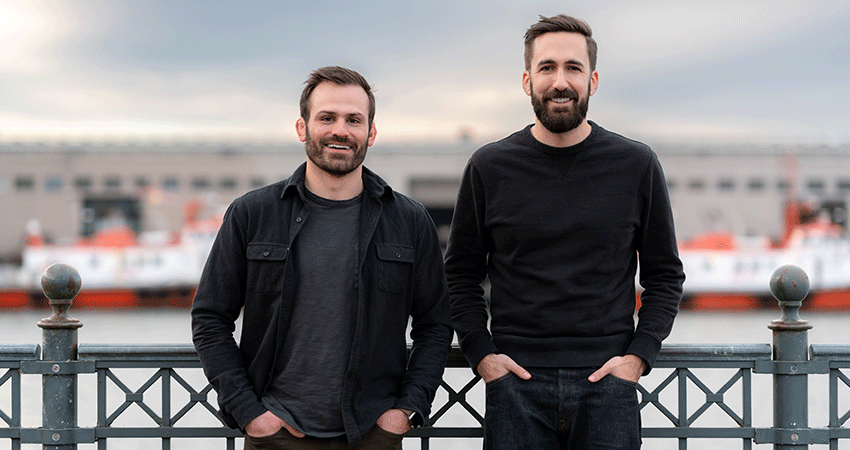Two Boxes cofounders Kyle Bertin (l) and Evan Stalter (r) aim to shake up ecommerce returns dispositioning
Two Boxes, a software startup promising to make the dispositioning of ecommerce returns more efficient for brands and 3PLs, has launched with a $4.5 million seed round and advisors from Amazon, Shopify, Whiplash, Loop Returns and Rent the Runway.
The funding for Denver-based Two Boxes was led by Vinyl Capital, with participation from Matchstick Ventures and Range Ventures. The company focuses on midmarket 3PLs and retailers who lack the capacity and technology to improve their returns disposition workflow.
This year, the company’s target is signing up 5-10 3PLs and 50-100 brands, either directly or through their provider, and scaling up operations via the funding, with the goal of becoming an intelligence layer in the returns ecosystem.
Two Boxes is also looking to bring on more developer talent to augment a team that includes veterans of Disney Animation, Lyft and Twitter.
Cofounder and CEO Kyle Bertin said he and partner, chief product officer Evan Stalter, realized the scope of the ecommerce returns issue when working for Outrider, a software system that coordinates autonomous yard operations. Both decided they wanted to pursue an entrepreneurial path and founded Two Boxes a year ago.
The pair then began crisscrossing the country, meeting with hundreds of retailers, tech companies and investors to gain a deeper understanding of the issues. Along the way came horror stories of returns disposition and customer credit taking anywhere from 15 to 40 days. They also heard of large dollar losses from markdowns, plus the environmental impact of even new-condition items that missed their window being destroyed.
“We found there was a massive bottleneck for returns once they’re received in a warehouse,” Bertin said. “That’s where the big problem is, millions of units of inventory going to thousands of facilities every day. There wasn’t good software to enable logistics providers to make the process of handling thousands of units for hundreds of brands more efficient.”
He and Stalter realized most of returns technology was focused on reverse logistics to the DC. Two Boxes handles what comes next: digitizing the massive task of triage, inspection and disposition, much of it still manual. Its software plugs into ecommerce frontends like Shopify and returns platforms such as Narvar and Happy Returns to coordinate dispositioning.
For example, a midmarket 3PL might have a handful of technology partners and 50 or more brand clients, each with a range of SKUs of varying quality that come back to their facility.
“Once it’s received, the logistics operator has a really difficult job of trying to operationalize what today is very manual,” Bertin said. “You might have a PDF from the brand explaining how to inspect a shoe, and the process is tracked in Excel or Google Sheets. We have access to the data on inventory coming back, with an attribute-based inspection system. We bring in more complex logic to help them determine, if this, then that.”
Bertin claims Two Boxes can reduce inspection times on ecommerce returns by more than 50%, allowing items to return to stock quicker for resale.
“Any associate can process any return for any brand,” he said. “To open each one, confirm it’s the right item and process an inspection, then track the results in Excel, used to take about three minutes. Now because all that is integrated, they spend one minute or less. From a 3PL perspective, inventory moves through their facility faster, which is a huge value add in terms of revenue generation and cost to serve improvement.”
For brands, Two Boxes captures critical information on inventory and product condition, with a dashboard providing KPIs like units back into stock daily vs. total received. “That can impact their offers of free shipping and returns,” he said. “They can also predict when SKUs will return, so they don’t buy inventory they don’t need. Brands can tend to over-buy as they don’t know the quality of what’s coming back, and don’t want to miss out on sales opportunities.”

